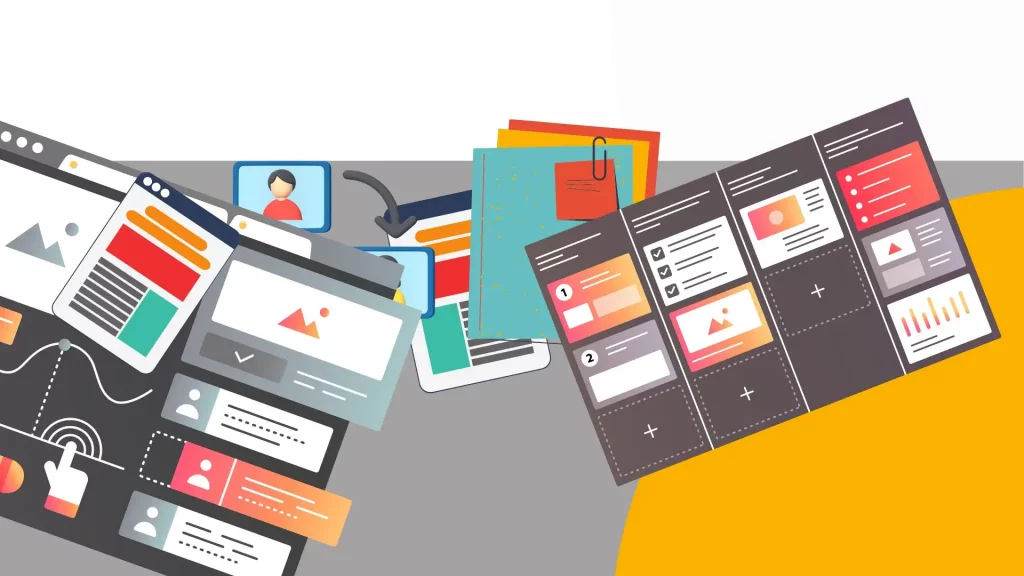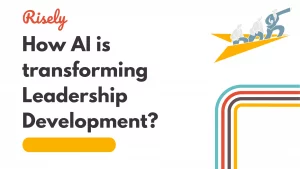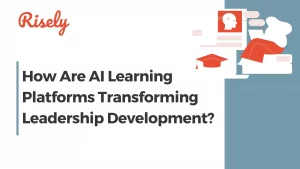14 Employee Satisfaction Ideas That Transform Your Company Culture
Nurturing employee satisfaction has become a cornerstone of organizational success. A satisfied workforce is more productive, engaged, loyal, and inclined to spread positivity within the organization. This blog is on employee satisfaction ideas; we’ll explore many creative strategies and employee satisfaction examples that can transform your workplace into a hub of contentment and productivity. Whether you’re an HR professional, manager, or team leader, the following pages will inspire you with fresh and innovative ideas to elevate employee satisfaction in your organization.What is employee satisfaction? Why is it important?
Employee satisfaction refers to the contentment and positive emotional state employees experience in their work environment. It measures how fulfilled and happy employees are with their jobs, roles, and overall work experience within a team. Employee satisfaction is important for several reasons:- Employee engagement
- Employee retention
- Productivity
- Employee well-being
- Attracting talent
- Innovation and creativity
- Customer satisfaction
Which factors influence employee satisfaction?
Employee satisfaction is influenced by many factors, both intrinsic to the individual and extrinsic to the workplace environment. These factors can vary from one person to another, but some common factors that influence employee satisfaction include:- Job content and tasks: The nature of the work itself, including its complexity, variety, and the opportunity for creativity and skill utilization, can significantly impact job satisfaction.
- Work-life balance: Maintaining a balance between work and personal life is crucial for satisfaction. Excessive work demands, long hours, and lack of flexibility can erode job satisfaction.
- Compensation and benefits: Adequate and fair compensation, including salaries, bonuses, and benefits (such as healthcare, retirement plans, and paid time off), is a fundamental factor in employee satisfaction.
- Supervision and leadership: Leadership quality and management directly affect employee satisfaction. Supportive and effective managers who provide guidance, clear expectations, and regular feedback contribute to higher satisfaction.
- Career growth and development: Opportunities for skill development, career advancement, and learning within the organization are essential for employees to feel satisfied and engaged in their roles.
- Coworker relationships: Positive relationships with colleagues and coworkers contribute to job satisfaction. A supportive and collaborative work environment fosters a sense of belonging and camaraderie.
- Organizational culture: The alignment of organizational values, ethics, and culture with employees’ personal values and beliefs plays a significant role in satisfaction. A positive and inclusive culture can boost satisfaction.
- Recognition and rewards: Acknowledgment and appreciation for employees’ contributions and achievements, including formal recognition programs, impact job satisfaction positively.
- Job security: Perceived job stability and security within the organization contribute to satisfaction. Uncertainty about job security can lead to dissatisfaction.
- Communication and feedback: Open, transparent, and effective communication from leadership and management is vital. Employees who feel heard and informed about company goals and decisions are more satisfied.
Other Interesting Reads
Employee satisfaction examples
Employee satisfaction can manifest in various ways, often reflected in employees’ attitudes, behaviors, and sentiments within the workplace. Here are some employee satisfaction examples:Overall job satisfaction
- “I am satisfied with my current job.”
- “I find my work fulfilling and meaningful.”
- “I enjoy coming to work every day.”
Work-life balance
- “I am able to maintain a healthy work-life balance.”
- “I feel that my workload is manageable.”
- “I have flexibility in my work hours when needed.”
Supervision and leadership
- “My supervisor provides clear expectations and guidance.”
- “I have a positive working relationship with my manager.”
- “My manager values and supports my professional development.”
Career growth and development
- “I have opportunities for skill development and learning.”
- “I can see a clear path for career advancement within the organization.”
- “I receive regular feedback on my performance and areas for improvement.”
Compensation and benefits
- “I believe my compensation is fair and competitive.”
- “I am satisfied with the benefits and perks offered by the organization.”
- “I feel that my contributions are appropriately rewarded.”
Coworker relationships
- “I have positive working relationships with my colleagues.”
- “My coworkers are supportive and collaborative.”
- “Teamwork and cooperation are valued in my department.”
Organizational culture
- “The organizational culture aligns with my values and beliefs.”
- “I feel a sense of belonging within the organization.”
- “Ethical practices and integrity are important to the company.”
Recognition and rewards
- “I receive recognition for my contributions and achievements.”
- “The organization has effective reward and recognition programs.”
- “I feel valued and appreciated for my work.”
Job security
- “I feel secure in my job within the organization.”
- “I am confident in the stability of the organization.”
- “I do not worry about job security.”
Communication and feedback
- “I receive clear and timely communication from leadership.”
- “Feedback from management is constructive and helpful.”
- “I have opportunities to voice my opinions and concerns.”
Training and development
- “The organization invests in my professional growth through training programs.”
- “I have access to resources and support for my continuous learning.”
- “I feel encouraged to develop new skills and abilities.”
14 Employee satisfaction ideas
Improving employee satisfaction requires a proactive approach that addresses various aspects of the work environment and employee experience. Some employee satisfaction ideas and strategies that organizations can implement:- Employee recognition programs: Establish formal recognition programs to acknowledge and reward outstanding employee performance and contributions.
- Regular feedback and communication: Foster open and transparent communication channels, including regular one-on-one meetings between employees and managers.
- Flexible work arrangements: Offer flexible work schedules, remote work options, or compressed work weeks to accommodate employees’ needs.
- Mentorship and coaching: Implement mentorship programs that pair experienced employees with newer hires to facilitate skill development and career growth.
- Wellness programs: Promote employee well-being through wellness initiatives, such as fitness programs, stress management resources, and mental health support.
- Employee engagement initiatives: Develop and implement engagement initiatives, such as team-building activities, social events, and volunteer opportunities.
- Employee surveys: Conduct regular employee satisfaction surveys to gather feedback, identify areas for improvement, and measure satisfaction over time.
- Employee involvement: Involve employees in decision-making processes and problem-solving to give them a sense of ownership.
- Peer recognition: Encourage peer-to-peer recognition, where employees acknowledge and appreciate each other’s contributions.
- Diversity and inclusion initiatives: Promote diversity and inclusion within the organization to create a more inclusive and welcoming workplace.
- Celebration of achievements: Celebrate team and individual achievements, milestones, and successes to reinforce a positive and appreciative culture.
- Employee resource groups: Establish employee resource groups (ERGs) or affinity groups to support employees with common interests and backgrounds.
- Community involvement: Encourage employees to participate in community service or volunteer activities to enhance their sense of purpose.
- Continuous learning opportunities: Offer opportunities for employees to attend workshops, seminars, and conferences to expand their knowledge and skills.
Conclusion
As we conclude the blog on employee satisfaction ideas, it’s clear that fostering a content and engaged workforce is not just an option but a strategic imperative. The activities and strategies explored in this blog provide a roadmap to transform your workplace into a haven of productivity, creativity, and positive energy. We’ve delved into many innovative employee satisfaction ideas, from peer recognition programs and wellness challenges to mentorship initiatives and cross-departmental projects. When thoughtfully implemented, these ideas can invigorate your workplace culture and enhance job satisfaction for employees at all levels.Attention Managers!
Ready to supercharge employee satisfaction through collaboration?
Take our free assessment on Collaboration now and unlock the secrets to a more engaged, harmonious team.
Other Related Blogs
Performance Management Training: Empowering Managers To Manage Better
Performance Management Training: Empowering Managers To Manage Better Remember that feeling of dread when you knew performance review season was rolling around? Yeah, us, too. For many employees, performance reviews…
Grooming for Management: The Key to Building a Sustainable Leadership Pipeline
Imagine a crucial leadership position opening up in your organization. You scramble to fill the role, internally and externally, searching for the perfect candidate. But wouldn’t it be much better…
Confused by L&D Metrics? Here’s How to Focus on What Matters
Confused by L&D Metrics? Here’s How to Focus on What Matters You’ve undoubtedly witnessed companies celebrating a record number of employees completing leadership training programs. Champagne toasts erupt, press releases…
Leading Beyond Lines: Dhun Chhokar’s Journey from Design to Management
Leading Beyond Lines: Dhun Chhokar’s Journey from Design to Management Remember the time when you were jittery and nervous about your career and were seeking advice from everyone? We’ve all…







